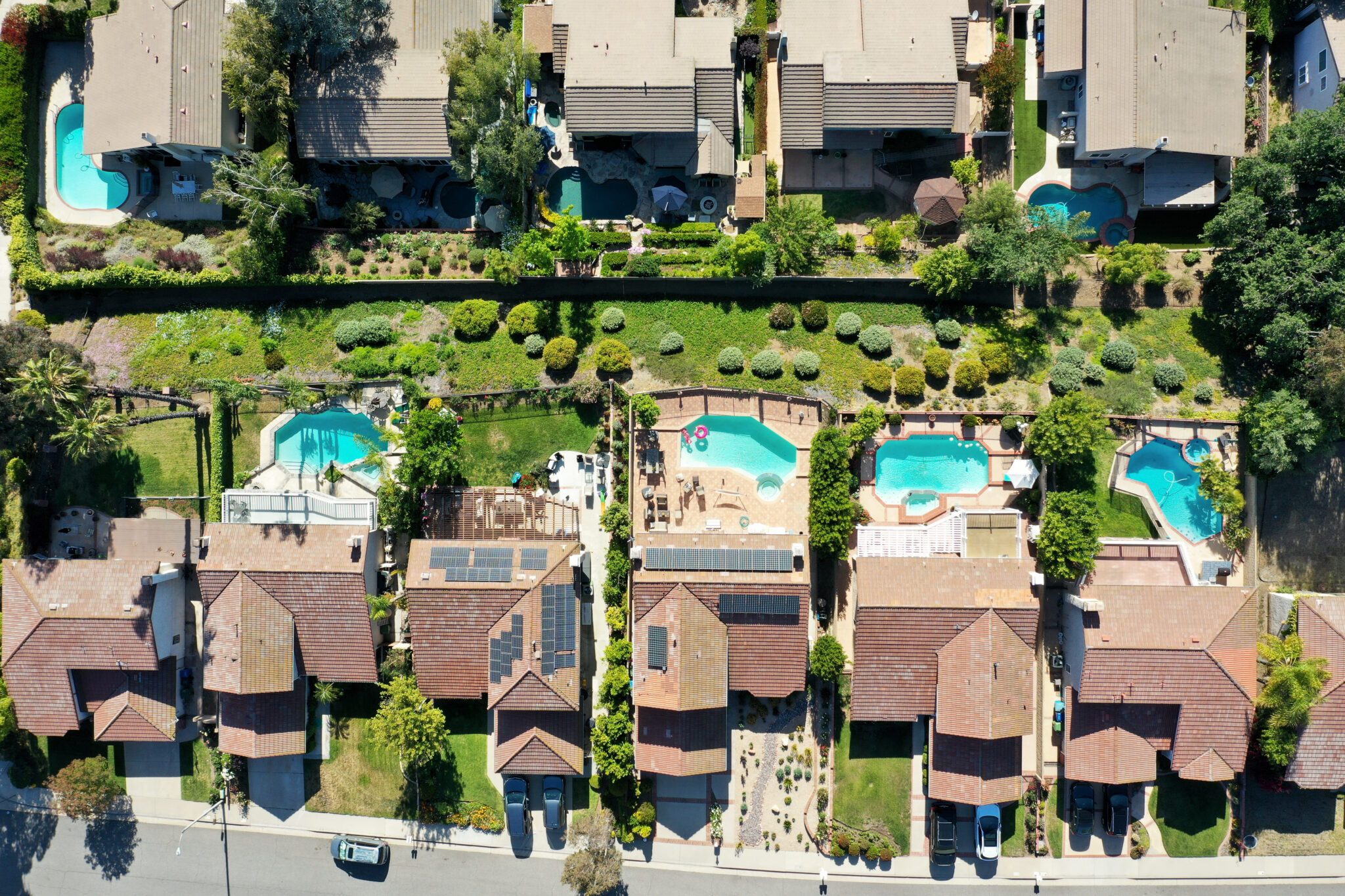 An aerial view of homes in one of the many cities in Southern California where residents will be limited to one day per week of outdoor watering on May 6, 2022 in Agoura Hills, California. A water shortage emergency was declared in Southern California with water restrictions for 6 million residents amid drought conditions. Credit: Mario Tama/Getty Images
An aerial view of homes in one of the many cities in Southern California where residents will be limited to one day per week of outdoor watering on May 6, 2022 in Agoura Hills, California. A water shortage emergency was declared in Southern California with water restrictions for 6 million residents amid drought conditions. Credit: Mario Tama/Getty ImagesThe study, published Monday in the journal Nature Sustainability, modeled the water use of residents of Cape Town, South Africa, based on their income levels. It found that the city’s wealthiest people consumed 50 times more water than its poorest—and mostly for non-basic needs like “garden watering, car washing and filling swimming pools.” Cape Town’s richest residents make up just 14 percent of the city’s population but consume 51 percent of the city’s water, according to the study. In contrast, Cape Town’s poorest residents make up 62 percent of the population but consume a mere 27 percent of the city’s water resources.
While the study focused on South Africa, the researchers said its findings should be a warning for cities around the world, especially ones with large wealth disparities. Urban water shortages are projected to increase in the coming decades, in part due to climate change driving more frequent and severe droughts while growing metropolitan populations increase water demand. But Monday’s study found that the household habits of wealthy individuals can have as much or more impact on water availability than droughts or population growth.
“Over the past two decades, more than 80 metropolitan cities across the world have faced severe water shortages due to droughts and unsustainable water use,” the study’s authors wrote. “The highly unequal metropolitan area of Cape Town serves as a case in point to illustrate how unsustainable water use by the elite can exacerbate urban water crises at least as much as climate change or population growth.”
In the American West, some Southern California communities found themselves at odds with one another last year over swimming pools as the state weighed mandatory water cuts due to the region’s ongoing megadrought.
“There seems to be a discrepancy between outdoor watering restrictions and the ability to keep pools filled,” Chase Andre, a South California resident, told the Los Angeles Times. “Water is a public utility, but private pools are not. If we recognize that the drought is affecting our water supply enough to limit watering plants and lawns, it seems reasonable to consider how private pools might be working against our collective conservation efforts.”
The U.S. has more than 10 million residential pools, each of which have a notable carbon footprint and require substantial amounts of water. The average U.S. pool consumes 20,000 gallons of water every year and increases annual electricity use for a house by 50 percent during the summer compared to homes without pools.
Conversations about the role wealth plays in global warming have only grown in recent years, especially as studies have shown in more detail how the habits of convenience and luxury are disproportionately fueling the climate crisis.
An analysis of flight data last year estimated that planes affiliated with celebrities—including Taylor Swift, Kylie Jenner and Drake—emitted an average of more than 3,376 metric tons of carbon dioxide, or roughly 480 times more than the annual emissions for an average person globally. Another analysis found that the world’s top 20 billionaires emitted an average of 8,000 metric tons of CO2 in 2018, with a whopping two-thirds of those emissions coming from superyachts. Those are private, luxury boats that reach at least 80 feet in length. Last year, the average superyacht sold for $3.1 million in the United States, according to an industry analysis.
Monday’s study also adds to a growing body of research that suggests global water scarcity will disproportionately burden the world’s most disadvantaged communities.
For example, during Cape Town’s 2018 water shortage crisis, when the local government threatened to shut off the water for a million homes amid an extreme multi-year drought, rich communities consumed large amounts of water while the city’s poor struggled to meet their basic needs, the study’s authors said. Amid the drought, the researchers noted, Cape Town’s wealthiest citizens also drilled private boreholes to access groundwater, which further depleted the city’s aquifer.
More than 1 billion people living in cities currently struggle to access clean drinking water, the United Nations said in a landmark report last month. That number could double over the next three decades, the global body predicts, with some of the poorest nations expected to experience the worst outcomes.
It’s a point that the authors of Monday’s study made as well.
“Climate change and population growth mean that water is becoming a more precious resource in big cities, but we have shown that social inequality is the biggest problem for poorer people getting access to water for their everyday needs,” Hannah Cloke, a climate scientist at England’s University of Reading and co-author of the study, told the Guardian. “Our projections show this crisis could get worse as the gap between the rich and the poor widens in many parts of the world.”